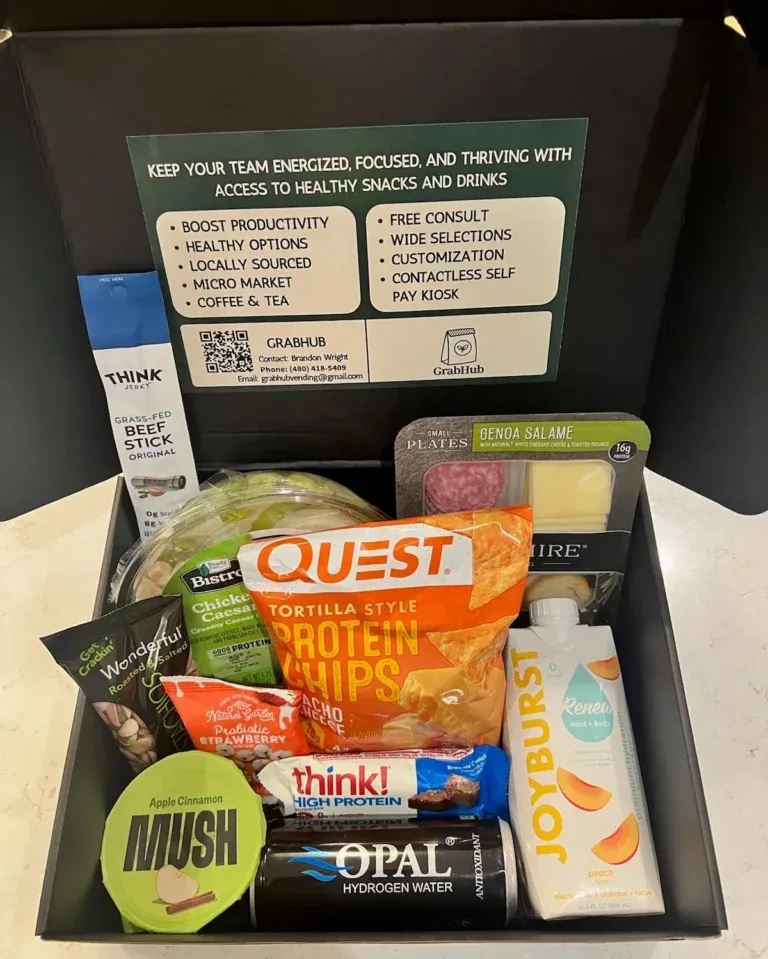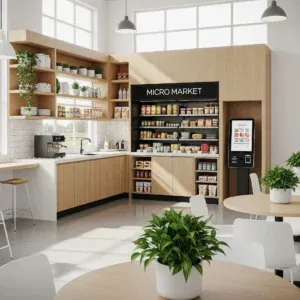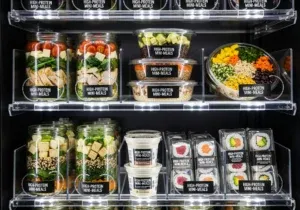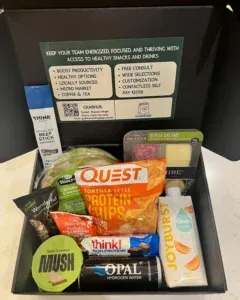The Ultimate Guide to Phoenix Micro Markets
Welcome to your complete resource for evaluating, planning, and implementing a micro market in your Phoenix workplace. This interactive guide synthesizes everything a decision-maker needs to know, from the core benefits and technology to the specific local permit requirements.
Vending vs. Micro Market: The Showdown
While both provide on-site refreshments, the employee experience is worlds apart. We’ve distilled the key differences from our research into an interactive comparison. See for yourself how a micro market offers a superior solution in variety, technology, and overall satisfaction.
Planning & Logistics Checklist
A successful installation hinges on proper planning. This checklist covers the essential requirements for space, utilities, and security. Most providers handle these details during a free site survey, but understanding the needs upfront empowers you to select the best location.
✅ Space Planning
- 1Calculate Footprint: For 100-300 employees, a 200-400 sq. ft. area is ideal for comfortable browsing and circulation.
- 2Select Location: Choose a high-traffic, central area like a main breakroom. Avoid remote corners to maximize usage.
- 3Ensure ADA Accessibility: Aisles must be at least 36 inches wide for wheelchair access, and the kiosk must be at an accessible height.
✅ Utilities (Power & Network)
- 1Dedicated Electrical Circuits: Crucial for safety. Typically requires 2-3 dedicated 20-amp, 120V circuits to power coolers, freezers, and the kiosk without tripping breakers.
- 2Network Connectivity: A reliable connection is needed for payments. A dedicated cellular connection is often preferred to avoid burdening your IT team.
✅ Security & Access
- 124/7 Access Model: The system is designed for round-the-clock availability, perfect for multiple shifts.
- 2Shrinkage Controls: A multi-layered strategy including visible security cameras, precise inventory tracking via the kiosk, and a cashless environment keeps theft extremely low.
The Smart Technology Stack
A micro market is more than just shelves and coolers; it’s an integrated technology platform. Each component communicates to create a seamless, reliable, and safe experience that traditional vending can’t match.
The Smart Kiosk
The system’s brain. It securely processes all modern cashless payments (tap-to-pay, mobile wallets) and collects real-time transaction data that feeds the inventory platform.
Intelligent Inventory
Sales data is analyzed to create predictive restocking plans. This data-driven approach ensures popular items are always available and eliminates the “sold out” frustrations of vending.
Smart Coolers
Equipped with sensors that constantly monitor temperature. If a power outage occurs, automated health locks engage to prevent the sale of unsafe products, guaranteeing food safety.
Productivity & ROI: The Business Case
A modern breakroom is not a cost center; it’s a strategic investment in your people. Providing convenient access to healthy food directly impacts performance and retention. This section quantifies that impact.
Key Questions Answered
Yes, this is critical. We typically require 2-3 dedicated 20-amp circuits to safely power the commercial-grade equipment without overloading your office’s electrical system.
It uses two key features: real-time sales data to ensure frequent restocking of fresh items, and smart coolers with automated health locks that secure the unit if the temperature rises above a safe level.
Each location needs a specific “Micro-Market Operating Permit.” Your service provider handles the entire application process, ensuring all equipment (like coolers with auto-shutoffs) meets local health codes.






